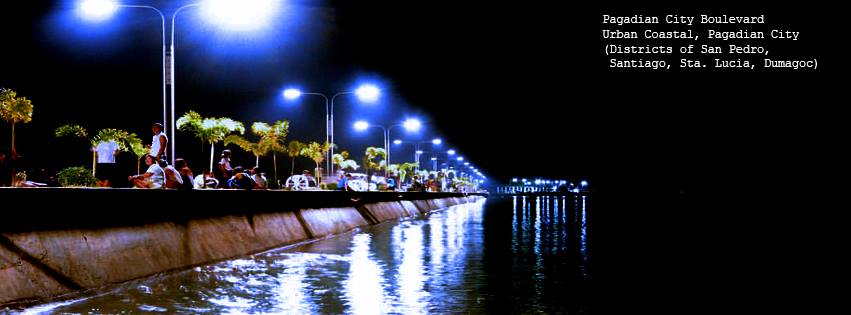Pagadian. After his brief tenure as town “Presidente”, a regular election was held with the Hon. Francisco Consolacion becoming the first elected municipal mayor.
Later, Congressman Roseller T. Lim authored R.A. 711 dividing Zamboanga into two provinces — the Norte and Sur — on June 6, 1952. Pagadian became the capital town of Zamboanga del Sur which was itself inaugurated on September 17, 1952. Pagadian became a chartered city on June 21, 1969 through R.A. 5478.
Geography
Situated on the northeastern side of the region, Pagadian City is the gateway to Zamboanga del Sur, the larhgest province of Western Mindanao. It is also a point of entry to the cities of Ozamis, Iligan and Cotabato. Its rolling terrain encompassing both commercial and residential districts, reminiscent of the famous Crown Colony, has earned for it the sobriquet Little Hongkong of the South. Pagadian City has a total land area of 331.6 square kilometers with 54 barangays.
Population and Languages/Dialects Spoken
Pagadian City was home to 125, 182 people per the 1995 Census count. Residents generally speak Cebuano, Subanun and Boholano. Muslims in the province also speak the dialects of the Maguindanaos, Tausugs, and Samals.
Zamboanga del Sur occupies the southern section of the Zamboanga peninsula that forms the western part of the Island of Mindanao. It is located at longitude 122° 30″” and latitude 7° 15″” north. It has a total land area of 473,491 hectares or 4,734.91 square miles.
Stretching northward from Sibugay in the southwest and running along the northern boundary to Salug Valley in the east is the province’s mountainous countryside. The coastal plains extend regularly from south to west then spread into wide flat lands when reaching the coastal plains of the Baganian peninsula in the southeast.
Political
Zamboanga del Sur is subdivided into 26 municipalities and 1 city. These divisions are further subdivided into 681 barangays. The province comprises two congressional districts.
Cebuano Language
The most commonly spoken language is Cebuano, spoken by 72.47% of the population. Also spoken are Zamboangueño/Chavacano, Tagalog, Subanen, Ilonggo, Maguindanao, Iranun, Boholano, and Ilocano.
Climate
The city is dry from January to March and wet from April to December. It is not affected by tropical storms and typhoons.
Economy
The economy is dominantly agricultural. Products include coco oil, livestock feed milling, rice/corn milling, including the processing of fruits, gifts and housewares made from indigenous materials like handmade paper, roots, rattan, buri, and bamboo; wood-based manufacture of furniture and furniture components from wood, rattan, and bamboo; marine and aquaculture including support services; construction services and manufacture of marble, concrete, and wooden construction materials. There are also notable mining areas in the province, such as found in the Municipality of Bayog which houses the renowned TVI, a Canadian-based mining firm which concentrates on Gold Mining, and the Cebu Ore Mining which is handling the Ore-Copper-Steel mines. There are also small-scale mines in the Municipality of Dumingag.
ADDITIONAL CONTACT INFO
